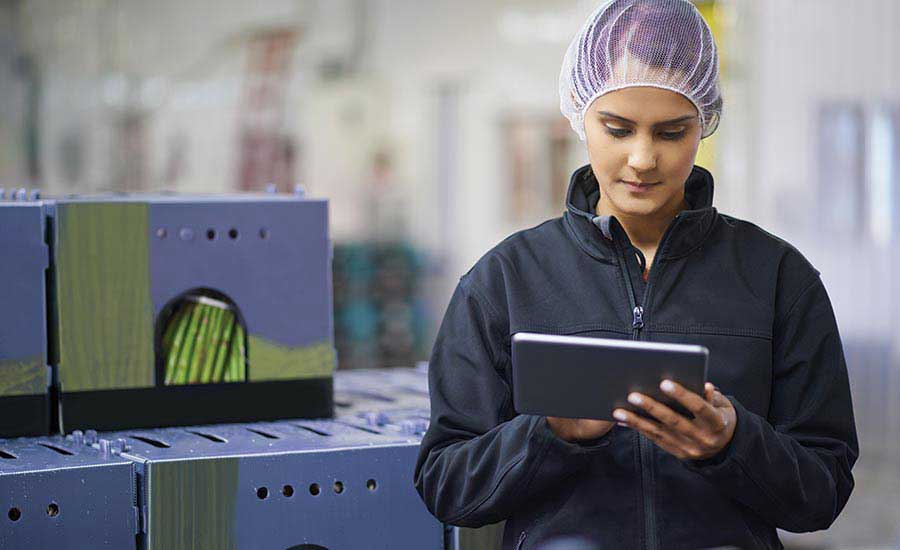The unprecedented economic disruption posed by the novel coronavirus has created opportunities for new technologies to change the game in most industries. The food supply chain is no exception. It remains ripe for new technologies to mitigate COVID-19-related disruptions and to improve the production, flow and consumer-friendliness of long-standing challenges.
An evolving conversation about supply chain changes spanning years has taken on a renewed intensity over the last six months. In 2016, a Food Industry Executive article signaled a number of ways the national food supply was being reshaped by technological advances. Globalization’s impact on the diversity of food sourcing caused the sub-industry of food safety testing to balloon to a market of $10.5 billion just six years ago. Local, near-source processing, chilling and freezing of food fostered new track-and-trace technologies, with product sales in that area quickly approaching the tens of billions halfway through the last decade.
One study cited by Food Industry Executive showed that information technology also played a critical role at reducing business costs and meeting customer demand. Products like sugar and flour, which are considered “functional” and subject to fairly stable demand, benefitted from automated ordering, quality-assurance control systems and delivery scheduling. Productivity and safety measures, like smart sensing labels that help to track and control temperatures and apps that can trace every ingredient in packaged products, rounded out the changes.
One accelerating trend has become especially personal to us all during the pandemic. Online grocery orders and delivery are no longer considered niche, luxury products as they were 5-10 years ago; they have been added to an expanding list of “essential” services.
If there is an overarching theme here, it is our ability to use new technologies to respond to whatever turn the world takes and make issues that arise a bit easier to overcome if we cannot fully get rid of them. When The Seam launched the Food Industry Exchange in May, long-standing industry trends were as much in mind as an instinct coronavirus was set to permanently change supply chains, barreling many changes forward by necessity. At the moment, the Food Industry Exchange is helping respond to imbalances between the supply side and the consumer side.
Things everyone noticed early on (e.g., the overflowing grocery store lines with carts full of toilet paper, pasta and soup) were and are part of a systemic supply chain disruption. They are parallel, on the one hand, to suppliers catering to specific businesses, services and industries being stuck with excess capacity when they closed. But excess capacity would seem to run counter to supermarket shelves stripped bare of essential items from consumers anxiously stockpiling. The Food Industry Exchange addresses this imbalance by, basically, playing matchmaker. Suppliers are connected with wholesalers and retailers on a registration-based, online exchange, showing them available products – yes, face masks included – digitizing and interconnecting a dispersed supply chain.
The signs are that our creativity in technological responses to supply chain shifts will continue to be needed in the coming months and even years. An often-cited Food Industry Association report suggests a majority of Americans think they will continue to shop the same as they did during the coronavirus, even after the crisis passes. Much more of them will eat at home, for example, and fewer will eat out, possibly broadening weekly shopping lists and the demand for certain products. Despite the fact that, from the start, Americans were assured they did not need to buy items like toilet paper in bulk like they were, anecdotal evidence suggests such shortages could remain a continued issue.
For those of us positioned to help, we will need to remain ever alert. But there is reason to be confident in technology’s ability, channeled by our ideas and implementation, to answer supply chain challenges of increasing intensity and complexity. Game on. And we are ready.
This article originally appeared on the Greater Memphis Chamber blog.
Mark Pryor is the Chairman and CEO of Memphis-based The Seam, a leading provider of food and agribusiness software and trading solutions, which is celebrating its 20th year in business. He serves on many industry boards, including Secretary of the Board at Agricenter International. Pryor was also named to the inaugural Board of Directors of the U.S. Cotton Trust Protocol in December 2019 as an advisor





